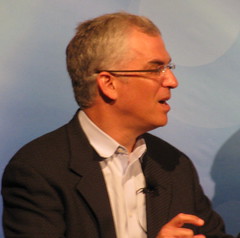
Cisco Straddles The Fence On Becoming A Service Provider
Cisco Systems says it will incorporate Jabber instant messaging into its WebEx Connect meeting software this summer as it beefs up its online applications.
But the company carefully vowed at the same time not to compete with its service provider customers and become a service provider itself – sort of.
On a conference call Monday Cisco said it plans to have a new version of its WebEx Connect online meeting place software available at the end of the summer. The new version will draw in technology from Jabber, which it agreed to buy in 2008.
But even as it delivers more online meeting and collaboration services, Cisco shied away delivering the services from massive Cisco-branded data centers, a la Google.
That would require the company to invest billion of dollars in data centers and compete with its service provider customers, says Padmasree Warrior, chief technology officer.
“We don’t necessarily want to be a service provider,” she said on a conference call.
And yet, Cisco straddled the fence. It also vowed to deliver more applications from a “Cisco cloud.” For example, the company has large amounts of online storage and as it develops products for small businesses, storage and back-up services from a Cisco cloud are possible, says Senior Vice President Doug Dennerline.













